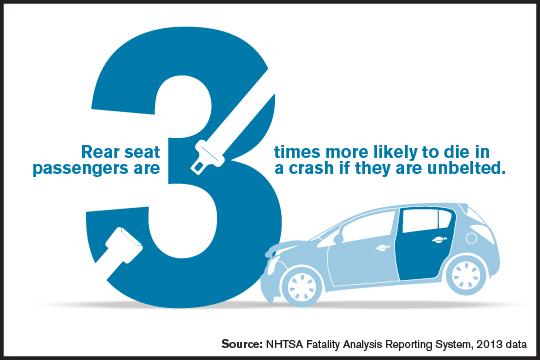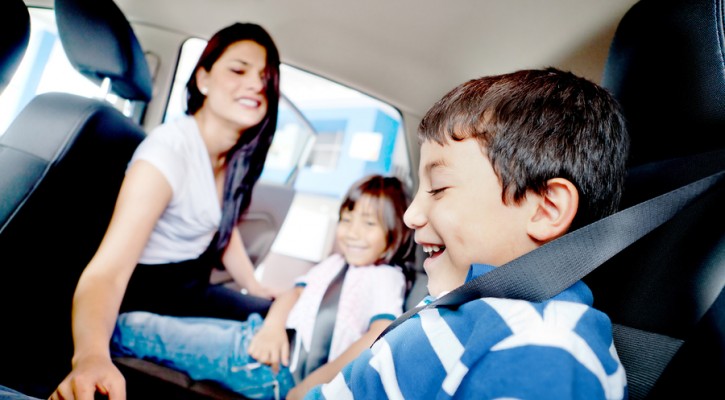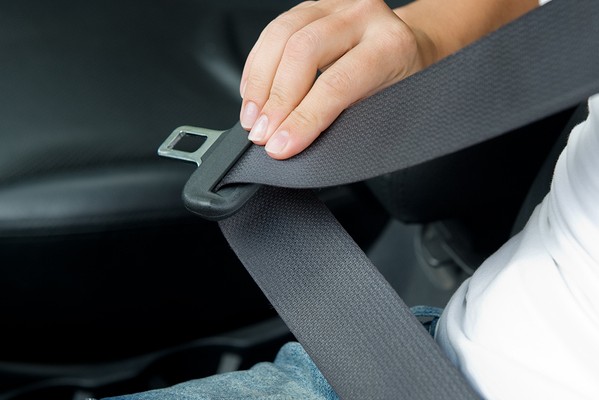Tag Archive: Seat belts

Rear Seat Adult Passengers Fail To Use Seat Belts
November 23, 2015
In February of this year, 60 Minutes correspondent and CBS newsman Bob Simon, was riding as a rear seat passenger in a livery cab when it was involved in a crash. Simon, who wasn’t wearing a seat belt, received massive head and torso injuries and died shortly after being taken to a hospital.
The Governors Highway Safety Administration (GHSA) says that too many adults riding in the rear seat fail to wear a seat belt and almost half of those who were killed in crashes could have survived had they been wearing a seat belt. According to a report by the GHSA, in 2013, 883 unrestrained rear seat passengers age eight and older were killed in crashes. The GHSA estimates that more than 400 of them would have survived if they had been wearing a seat belt.
The GHSA report places a lot of the blame for the lack of seat belt use among rear seat passengers on the states for failing to pass strict seat belt laws that require all occupants of a motor vehicle to use seat belts; no matter where they are seated. Only sixteen states and the District of Columbia currently have primary seat belt laws that require everyone in the vehicle in both the front and rear seat to be buckled up at all times. Ten states have secondary laws requiring rear seat seat belt use but those laws can only be enforced if the driver is stopped for another “primary” traffic offense. Some states have a mix of primary front seat and secondary rear seat laws. Twenty-two states, including Florida, have no laws at all requiring the use of seat belts by adults in the rear seat.
Among the states with stricter rear seat seat belt laws, seat belts are used by approximately 83 percent of adults in the rear seat while in states with no rear seat laws, only 74 percent of adults use seat belts. There is a direct correlation between state seat belt laws and use of seat belts by adults in the rear seat.
Even if they have primary seat belt laws for all seating positions, some states, including New York, don’t require rear seat passengers in taxis or cars-for-hire to wear seat belts. In the case of Bob Simon, he wasn’t required by law to wear a seat belt but many feel he would have survived the crash if he had been wearing one.
Adults who don’t use seat belts in the rear seat often aren’t the only ones killed or injured in a crash. Even those in the front seat who are using seat belts can be killed in a crash when they’re struck by the rear seat adult’s body as it flies forward and bounces around the interior of the vehicle.
The GHSA calls on states to enact strict, primary seat belt laws requiring all passengers, including those in the rear seat to wear a seat belt at all times. Even if your state doesn’t require the use of seat belts by adults in the rear seat, it’s always a good idea to wear one. Seat belts save lives.
Read more: http://www.ghsa.org/html/publications/spotlight/rearbelts2015.html
Feds Urge Parents To Make Tweens Buckle Up
March 13, 2015
It’s hard to get tweens to buckle up so the federal Department of Transportation (DOT) and the National Highway Traffic Safety Administration (NHTSA) are trying to do something about it. Citing alarming statistics of tweens (ages 8 to 14) who were killed because they weren’t wearing a seat belt, DOT and NHTSA announced a new campaign called “Never Give Up Until They Buckle Up.”
Parents who would never dream of bringing their newborn home from the hospital without a proper car seat and who taught their toddlers that the car wouldn’t start until everyone was buckled in seem to give up on tweens. With the rush-rush lifestyle of many families and so many short trips to school, practice and the store, it sometimes seems too much of a hassle to fight the seat belt fight with tweens.
Tweens are entering that age where they are starting to feel grown up. They’re experimenting with limits and testing the rules. They often feel like they’re too old for seat belts and, in order to show their independence, don’t bother to buckle up. That can be a deadly mistake.
According to NHTSA, “Over the past 5 years, 1,552 kids ages 8-14 were not wearing seat belts when they died in a crash, and one in four of those kids were age 14. That’s a trend that has to stop now.”
Among other important information, the Never Give Up Until They Buckle Up website has information for parents on:
The tween years are the time when it’s more important than ever to stress how important the rules are if tweens want to live long enough to become teens.
Read more: Don’t Give Up Until They Buckle Up

Kids In Cars Put In Danger By Parents
September 16, 2014
One in five parents put kids in cars in danger by “bending the rules” according to a survey conducted by Safe Kids Worldwide and funded by the General Motors Foundation. In the online survey, parents admitted that, when carpooling, they sometimes bent the rules by allowing kids to ride without a booster seat or even without seat belts.
According to Safe Kids, “Sixty-one percent of parents say they notice other carpool drivers bending the rules. Safe Kids research also shows that one in four parents report they don’t buckle up their children on every ride.”
Even on a short trip, the dangers of a crash are high. Most car crashes happen within 25 miles of home and at speeds under 45 mph. The reason for that is simple; your chances of being involved in a crash close to home are greater because that’s where you drive most often.
School age children should be belted into a booster seat seat until they are big enough to wear a seat belt properly. Safety experts say that kids should remain in a booster seat until they are at least 4’7” tall and weigh between 80 and 100 pounds. For most kids that’s between 9 and 11 years of age.
According to the National Highway Transportation Safety Administration (NHTSA), motor vehicle crashes were the leading cause of death for children age 4 and every age 11 through 14. They are the second leading cause of death for ages 5 through 10. NHTSA data shows that, “among passenger vehicle occupants 5 and older, seat belts saved an estimated 12,174 lives in 2012. If all passenger vehicle occupants 5 and older had worn seat belts, 15,205 lives (that is, an additional 3,031) could have been saved in 2012.”
Even on short trips, kids in cars need to be buckled into a child safety seat appropriate for their age. Parents who carpool should never take more children than the number of seat belts available in the vehicle. Carpooling parents should also arrange to swap out car seats and booster seats.
Don’t place yourself in the position of a parent who says “If only I had….”
For more information, read: STUDY REVEALS 9 OUT OF 10 PARENTS MOVE THEIR CHILD FROM BOOSTER SEAT TO SEAT BELT BEFORE THEIR CHILD IS BIG ENOUGH

Ask the Traffic School Instructor: Seat Belt Entrapment
July 8, 2014
Question: I know that you are supposed to wear a seat belt but I’m afraid of being trapped in my car if it should catch fire or go into the water. Are my fears real?
Answer: First off, I would never say anyone’s fears aren’t real. They are your fears so they are valid to you. Instead, let’s take a look at the reality of being trapped by a seat belt.
According to the National Highway Traffic Safety Administration, the type of crash you are imagining happens in less than one-half of one percent of all crashes. If we could plan our driving habits based on the type of crash we were going to have, then we could probably, just as easily, plan not to have a crash to begin with. But, for the sake of discussion, let’s assume you were one of the one-half of one percent involved in a crash into water or one that caused your vehicle to catch fire. What could happen to you if you weren’t wearing a seat belt?
Whether you crash into another vehicle or into water, your unbelted body will have no choice but to obey the laws of physics and continue traveling at whatever speed the car was traveling before the crash. That means your body will smash into the steering wheel at say 35 or 45 mph. Even in a relatively low speed crash at 25 mph, a small woman weighing 115 pounds will strike the steering wheel with a force of 2,404 lbs. If your car tumbles or spins out, your unbelted body will be thrown around inside the vehicle and you’ll probably have multiple impact points before coming to rest. Even if you’re still conscious after going through that sort of trauma, you probably won’t be in any shape to escape the vehicle.
No matter what type of crash or how violent it may be, you’re always better off securely fastened in place until the vehicle comes to a stop. By remaining fastened in, your chances of remaining conscious and healthy enough to effect an escape from the vehicle are tremendously increased.
As far as being trapped by the seat belt itself, mechanically, there’s nothing simpler than a seat belt latch. There is just one simple button to push and the probability of such a simple mechanism failing is astronomically small.
May I suggest, instead of fearing the consequences of wearing a seat belt, that you turn that around into a fear of the consequences of not wearing a seat belt.

Ask The Traffic School Instructor: Are Airbags Enough Protection?
May 20, 2014
Question: If my car is equipped with airbags, do I still need to wear a seat belt?
Answer: The technical term for airbags (and you’ll see this embossed on your steering wheel) is the Secondary Restraint System or SRS. Airbags aren’t meant to be the primary restraint system, they are only meant as a backup system. They won’t work effectively if you aren’t wearing your seat belt. In fact, traffic deaths have been attributed to airbags because the driver was either sitting too close to the airbag or, as in the great majority of cases, not wearing their seat belt. In a crash, your body will continue traveling forward at the speed the car was going before the crash until it is stopped by something else (Newton’s laws of motion). If you’re wearing your seat belt, the seat belt will restrain you and, if the airbag deploys, it will act as an extra cushion to keep your face from smashing into the steering column or dashboard. The airbag deploys at 200 mph in one-tenth of a second. If you aren’t wearing your seat belt, your body will fly forward as the airbag is traveling toward you at 200 mph. In that case, the crash forces will be tremendous and can easily be fatal. Remember also that the airbag doesn’t deploy in every crash. If the angle of the crash is such that the airbag sensors aren’t actuated, the airbags won’t deploy. Airbags are a great life saving device when used properly and that means using them in conjunction with the seat belt. Seat belts are the most important, first, and primary safety device in the vehicle.
